The Civil War Guided Reading Lesson 2 Early Years of the War Answers
The American Civil War started due to the secession of Southern states who then went on to course a new federal government, the Confederate States of America. American president Abraham Lincoln alleged in his inaugural accost that he would use force to maintain possession of Federal property and the war began with the Confederate attack on Fort Sumter on April 12, 1861. The American Civil State of war lasted till May nine, 1865 and was ultimately won by the Matrimony forces. Even so, this came at the cost of the lives of 620,000 to 750,000 people, which is more than American deaths than in all other U.S. wars combined. The primary reasons behind this costly state of war include the long continuing conflict betwixt the two sides over the issue of slavery; and friction over which powers belonged to the sovereign states and which to the Federal government. Know more nearly the American Civil War through its ten major political, economical and social causes.
#1 Economics of Cotton
The financial and political influence of cotton in the 18th and 19th century was unprecedented. It was perhaps far greater than that of the oil industry in the late 20th and early 21st century. With the introduction of the cotton gin in 1793 and the flourishing slave trade, the southern states of America became the primary cotton wool suppliers of the world. By the mid-19th century, the southerners were supplying more than seventy percentage of the cotton to Slap-up Britain, the leading globe economic and colonial power of the fourth dimension. The plantation owners, with black cotton wool growing slaves, gained tremendous wealth and influence during the times and were willing to go to any lengths to protect their interests. The long tension between the northern Free states and the southern Slave states was reaching a boiling point at this fourth dimension. With the economies of major world powers U.k. and France dependent on cotton from the southern states, many southerners believed that world powers would intervene on their behalf, giving them the confidence to take on the more powerful and resourceful north.
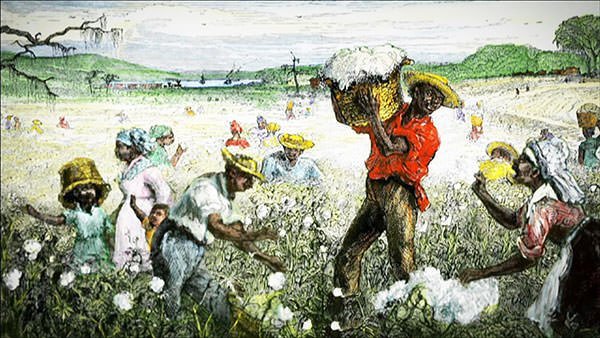
#ii Slavery
By the mid-19th century, slavery had been the cause of friction between the southern S lave states and the northern F ree states for many decades. Slavery was illegal in much of the n, existence outlawed in the belatedly 18th and early 19th century. Withal, it was deeply interwoven with the economic science of the southern states, which had become the primary source of raw cotton for the British and European industries. By the start of the Civil State of war, some 4 meg Africans and their descendants toiled as slave laborers in the S. The per capita wealth of Southern whites was twice that of the Northerners. 3-fifths of the wealthiest individuals in the U nion came from the southern states and they were deeply invested in slavery. On the contrary the north was more invested in industry and entrepreneurship despite a reasonably poor working class. The political and social climate in the northward had turned more and more against the institution of slavery and, to resolve the issue, a conflict or a major compromise was inevitable.
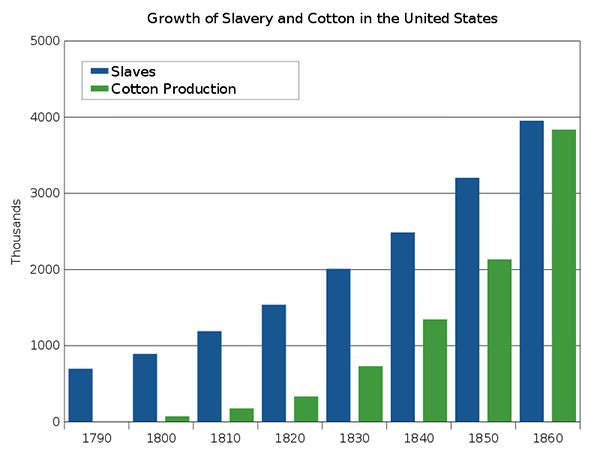
#3 State'southward Rights
The politics and debates over which powers belonged to the sovereign states and which to the Federal government were not uncommon in the The states since its inception. Information technology was in fact the basis for the germination of its first two political parties; the Democratic Republican party formed in 1792 under Thomas Jefferson, favored state rights while the Federalists under Alexander Hamilton believed in a centralized national regime with potent fiscal roots. Slavery w equally be the main bone of contention in this country vs federal government tussle leading upwardly to the civil state of war. The Slave states were adamant that slavery was a country effect and they were unwilling to accept any federal intervention on the subject.

#4 Territorial Expansion of the U.s.
The politics over slavery began to estrus up in the early to mid-19th century equally new territories were being added to the union. Equally long as in that location were equal number of slave holding states in the south vis-a-half-dozen Free states in the north, there was a perceived residuum of ability. However each new territory that applied for statehood would tilt the scales depending on weather it joined as a Complimentary Land or a Southward lave state. The northern whites feared that if slavery continued to expand to new territories they would inevitably join the southern slave-property states making the north irrelevant and the United States would somewhen get totally dominated by elite Southern slaveholders. The Southerners on the other hand viewed slavery as the key to their economic well-beingness. Its expansion to newer territories opened up tremendous product opportunities for them to further their political and economic interests. This tussle led to the Missouri Compromise in 1820 establishing lands due west of the Mississippi and below latitude 36º 30′ as slave and north of the line, except Missouri, as free. The political struggles over the outcome continued with moments like the Wilmot Proviso Debates of 1846, victory in the Mexican American W ar in 1848, the Fugitive state law and the C ompromise of 1850, the Kansas Nebraska Act of 1854 and the Lincoln Douglas debates of 1858. These tussles ultimately led to a point where civil war became unavoidable.

#5 The Abolitionist Movement
The American abolitionist move emerged in the 1830s as part of religious revivalism seeing slavery as a personal sin and emancipation equally a repentance for the sin. The Abolitionists tried to achieve and convert a mass audience. They met with opposition from private slaveholders and national religious institutions. In 1831, abolitionist William Lloyd Garrison began publishing the Liberator. Information technology was supported largely by costless African-Americans, who played a major role in the move. The American Anti-Slavery Society was founded in 1833 in Philadelphia by Garrison, Arthur and Lewis Tappan, and about 60 other delegates. In the coming years they would plant hundreds of branches across the Costless states producing anti-slavery literature, lectures and petitions enervating Congress to finish all federal back up to slavery. The Abolitionists also played a major role in the underground railways; a network of secret routes, meeting places and safe houses used past slaves to escape S lave states to accomplish Free states and Canada. It helped an estimated 100,000 slaves over a few decades.
#6 Uncle Tom'due south Cabin
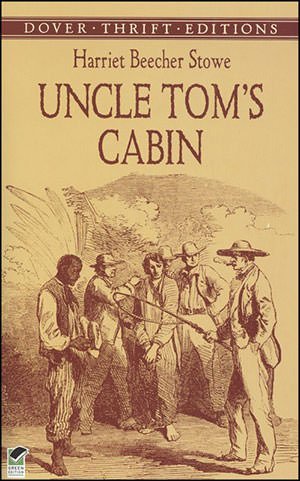
Uncle Tom'southward Cabin was a path breaking fiction novel by Harriet Beecher Stowe, offset published in installments in a magazine during 1850–51. Information technology appeared as a book in 1852 selling 300,000 copies in that year and it connected to sell well for many more years. Though abolitionist printing had been running in America for a few decades, many viewed them as an extreme fringe. In her piece of work of fiction, however, Harriet Beecher Stowe was able to connect to the general readers delivering an extremely sensitive and powerful message. Uncle Tom'south Cabin portrayed the lives of the slaves and their owners, how slavery operated equally a business organization, how the slaves were bought and sold, and how they were separated from their families. Stove'south characters were white and black, of the North and the South, benevolent and sadistic, all grappling with the establishment of slavery. The novel with its tremendous success was instrumental in irresolute the public perception on slavery. It is frequently quoted though not verified that when Abraham Lincoln met Stowe at the White House in Dec 1862, he reportedly greeted her by saying, "Is this the lilliputian woman who made this Slap-up War?"
#seven Bleeding Kansas
In 1854, the Kansas Nebraska A ct was passed which overturned the 1820 Missouri Compromise and mooted for popular sovereignty. That meant that instead of having a latitude carve up the slave and non-slave territory, the residents of the state would decide whether it joined equally a slave state or a gratis land. This led to the flooding to the state of both pro – slavery and anti-slavery factions forming their separate governments and trying to influence the decision. Popularized by the New York Tribune the term 'B leeding Kansas' refers to the serial of confrontations, electoral frauds, assaults and retributive murders that took place between these groups between 1854 and 1861. Bleeding Kansas was the precursor to the civil war in a way that information technology was where confrontations started getting more serious and physical.
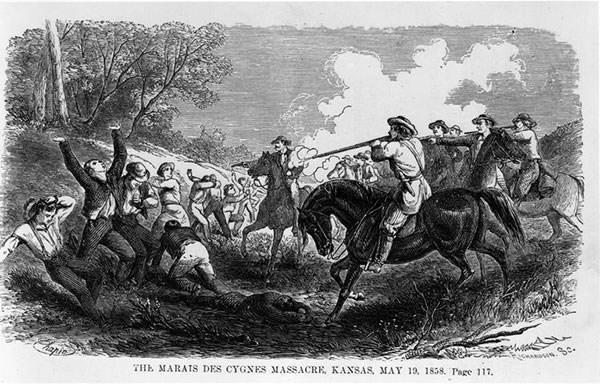
#8 The Dred Scott Decision
The Dred Scott case or Dred Scott Vs Sanford was a landmark conclusion in US Police history and is considered to have acted as a catalyst in the American Ceremonious War. In 1833, Dred Scott was purchased by US army surgeon John Emerson and taken to Winconsin which was a non-slave territory. In 1840, Scott, his new wife, and their young children moved to Louisiana and then to St. Louis with Emerson. After the decease of Emerson, Dred Scott and his family came under Emerson'south wife Eliza Irene Sanford. Things turned sour in 1846 when, after years of work, the Scotts attempted to buy their liberty from Sanford and she refused. In 1850 the state court declared Scott gratis just the decision was overturned by the Missouri Supreme Court. In 1856-57 the case was contested in the U.s. Supreme Courtroom. In a 7–2 conclusion written by Chief Justice Roger B. Taney, the court denied Scott's request ruling that a negro, whose ancestors were imported into the United Sates and sold as slaves, whether enslaved or free, could not be an American citizen and therefore had no standing to sue in federal court. The decision acquired an outrage among the anti-slavery groups and is counted among the worst decisions given by the U.s. Supreme Court.
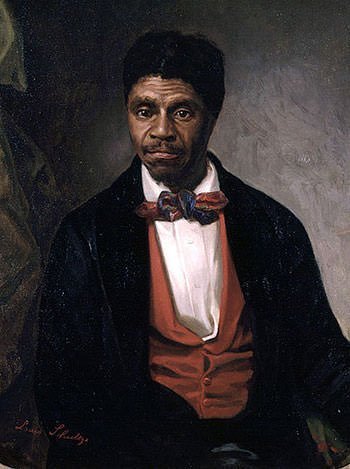
#9 Election of Abraham Lincoln as the President
The heated Lincoln Douglas debates of 1858 were a series of seven debates between Abraham Lincoln of the newly formed Republican Party and Stephen Douglas of the Democratic Political party. The main consequence discussed in these debates was slavery in the The states. It was these debates that fabricated Lincoln a prominent figure in the national politics. He gained nomination for President in 1860 which totally outraged the southerners who hated him for his anti-slavery opinion. On Nov 6, 1860, to the surprise of many, Abraham Lincoln won the Us presidential election without the support of a single southern state. Though his election may non take been the chief cause for the war merely it sent alert bells ringing in the southern states leading to secession and finally the civil war in 1861.

#10 Secession of the South from the Union
The election of Lincoln caused the state of Due south Carolina to telephone call a land convention which voted unanimously in favor of secession on 20th December, 1860. The "cotton states" of Mississippi, Florida, Alabama, Georgia, Louisiana and Texas followed adjust, seceding in January and Feb 1861. These states then agreed to form their own Federal Government calling information technology the Confederate States of America, on February iv, 1861. Afterward the Confederate attack on Fort Sumter in April, Lincoln called on all usa to send forces to recapture federal properties. Virginia, N Carolina, Arkansas and Tennessee ,unwilling to send forces against their neighbors, voted to secede and joined the Confederates. In his inaugural address on March 4, 1861 Lincoln called any secession "legally void". He had no intent to invade southern states nor did he intend to end slavery where information technology existed. However, he said that he would utilize force to maintain possession of Federal property. The battle lines were clearly fatigued.
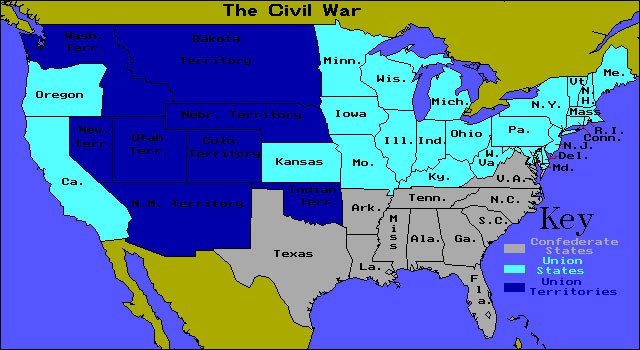
Cotton Is King
Tillage of cotton wool using black slaves brought huge profits to the owners of large plantations, making them some of the wealthiest men in the U.S. prior to the Civil State of war. The importance of cotton fiber and the confidence of the Southward based on cotton fiber may exist best summed in the 1858 statement of Senator James Henry Hammond of South Carolina, "Without the firing of a gun, without drawing a sword, should they [Northerners] make war upon u.s.a. [Southerners], we could bring the whole world to our feet. What would happen if no cotton wool was furnished for three years? England would topple headlong and carry the whole civilized earth with her. No, you cartel non make war on cotton! No power on earth dares make war upon it. Cotton is Rex."
Source: https://learnodo-newtonic.com/american-civil-war-causes
0 Response to "The Civil War Guided Reading Lesson 2 Early Years of the War Answers"
Post a Comment